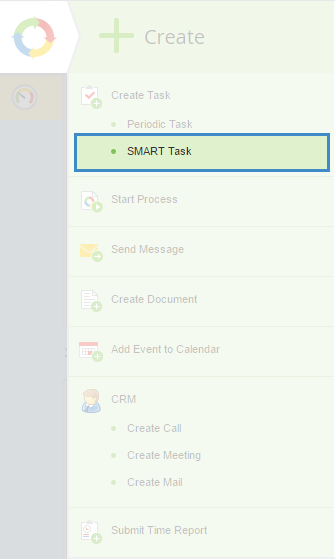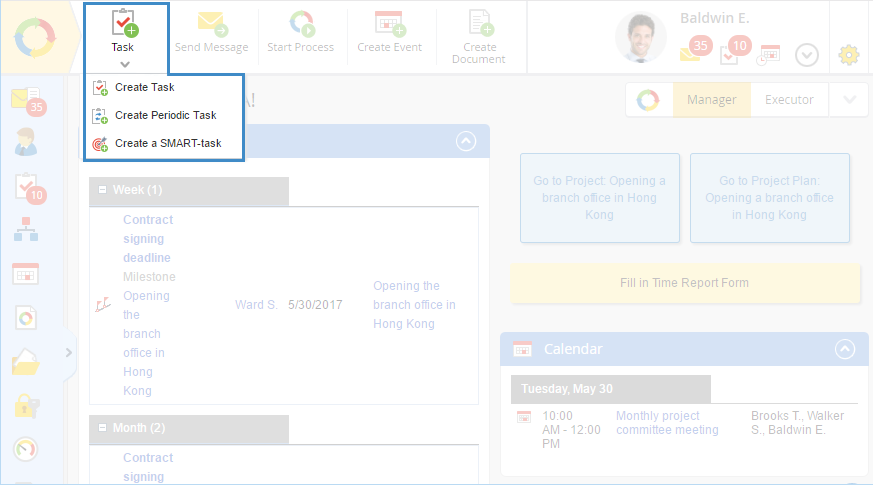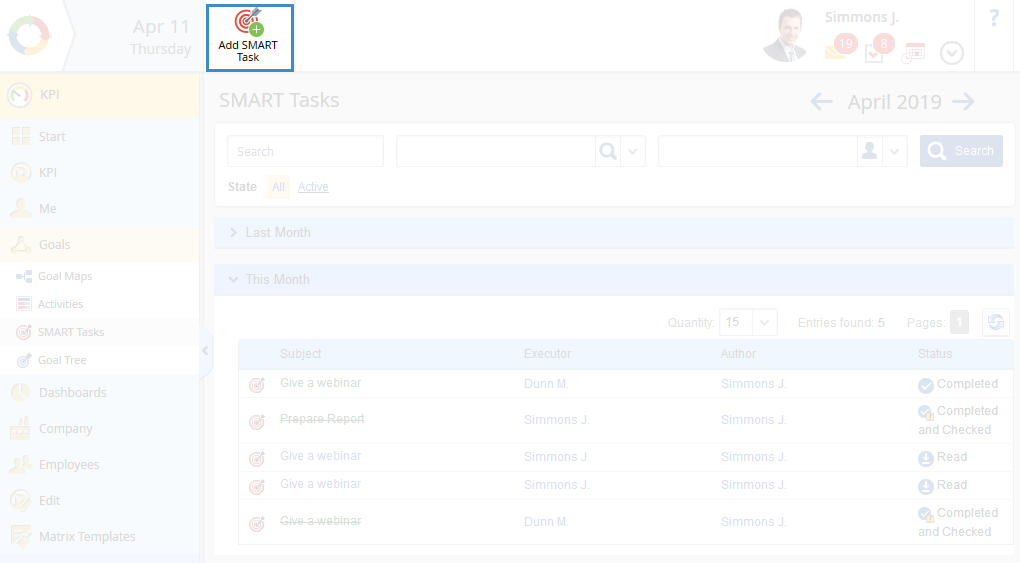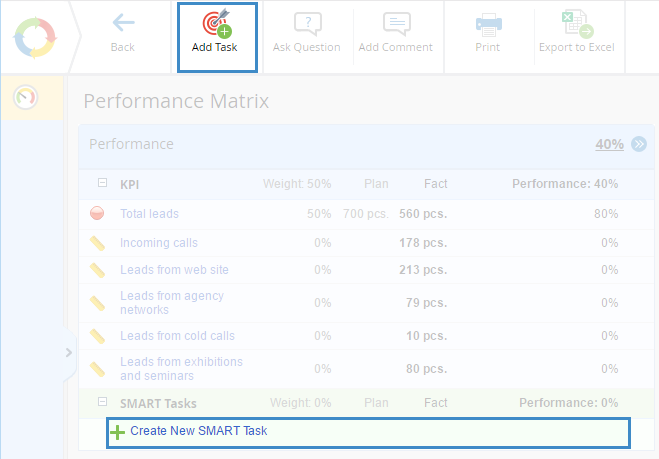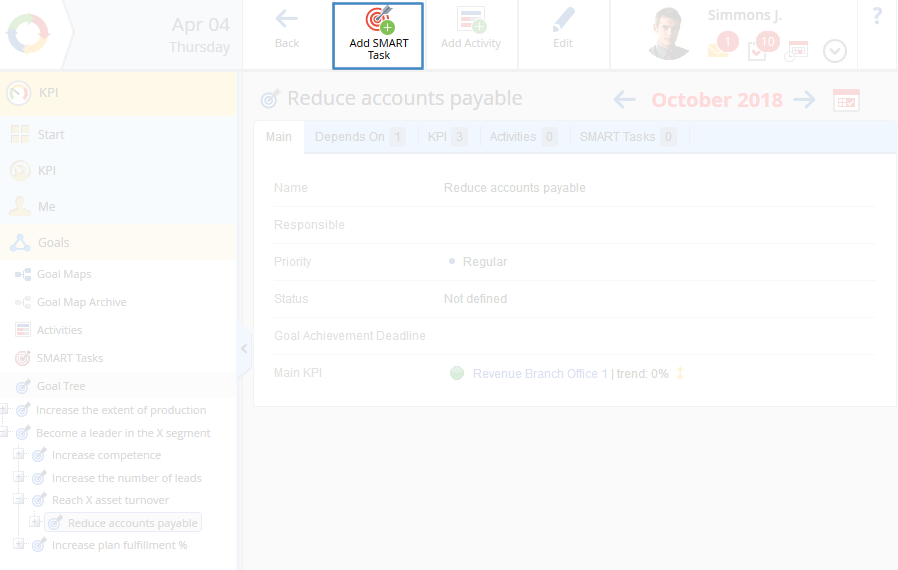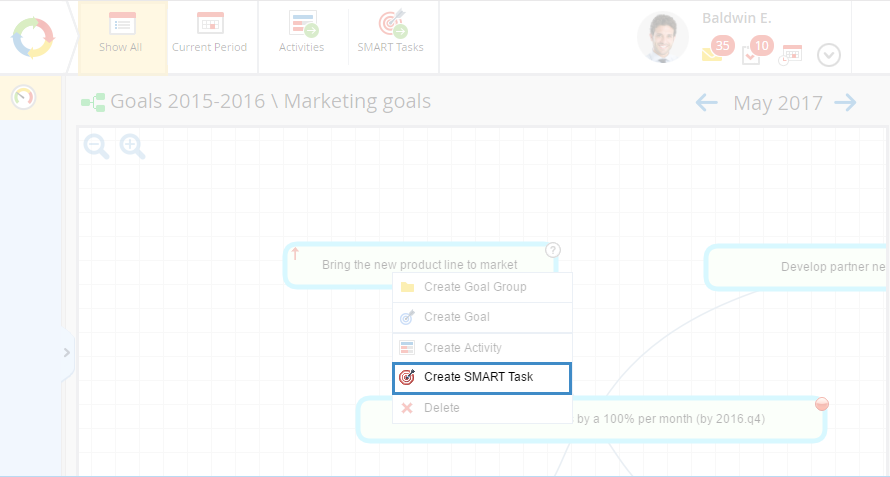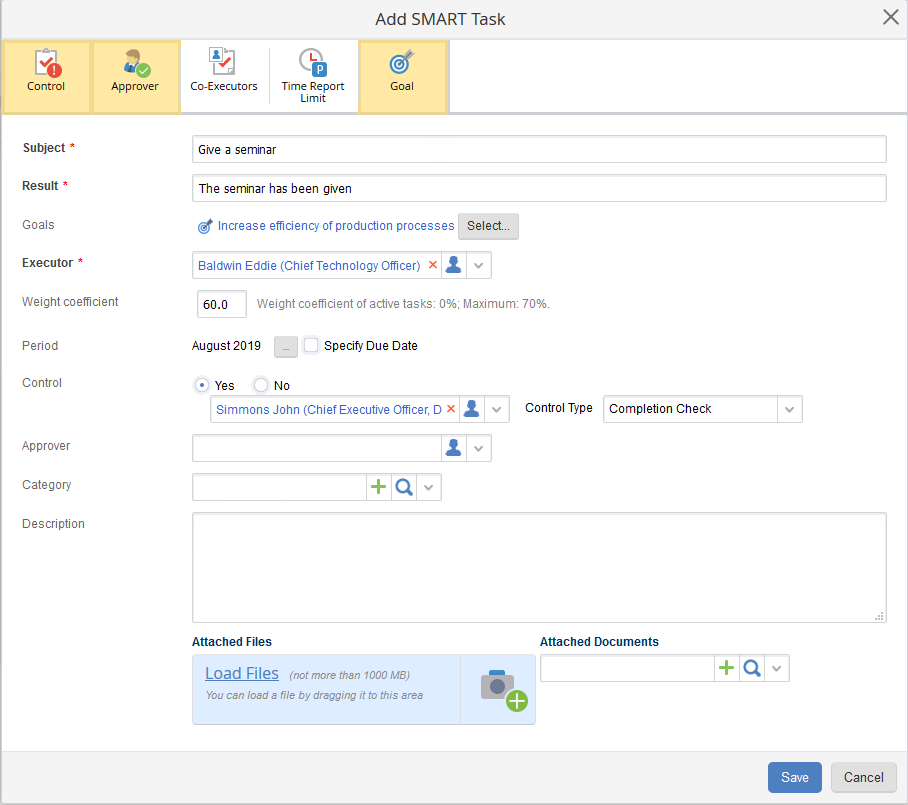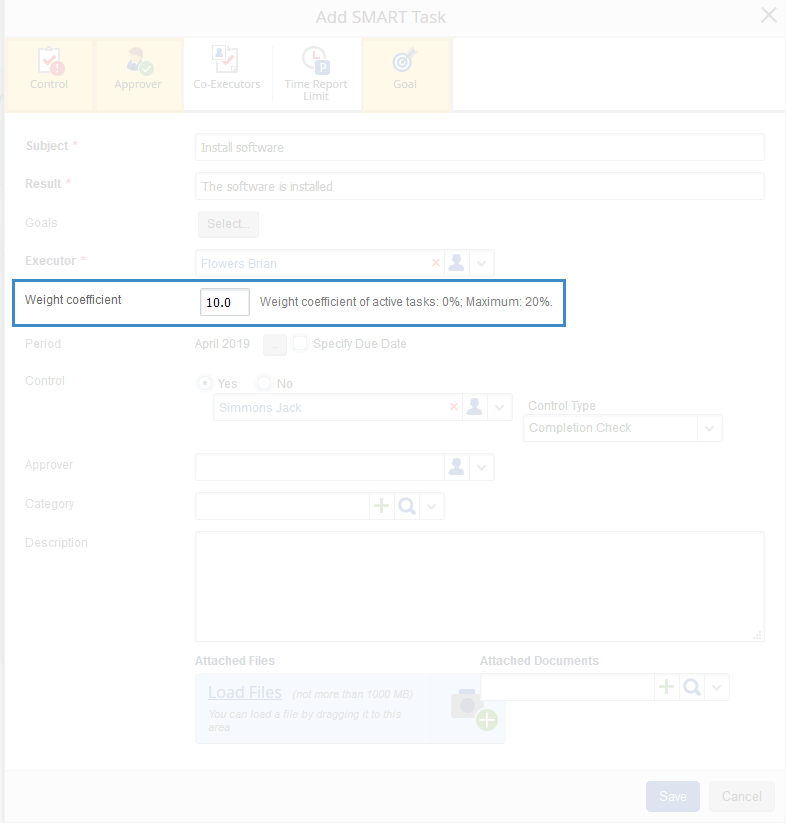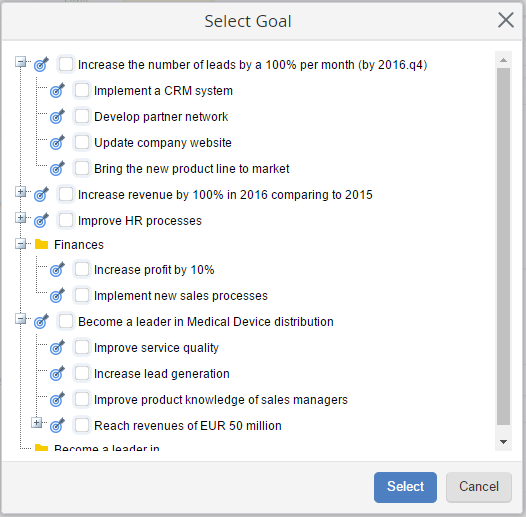Creating SMART Tasks
Each user of ELMA BPM can create a SMART task in several ways:
Fig. 1. Main system menu. The SMART Task button
-
On the main page of ELMA Web Portal in the top menu, click the Task button and select Create SMART task (fig. 2).
Fig. 2. Main page of ELMA Web Portal. Creating a SMART task button
Fig. 3. Goals – SMART Tasks – Add SMART Task button
-
In the performance matrix in the upper left corner, click the Add Task button; or in the SMART Tasks unit of the performance matrix, click the Create New SMART Task button (fig. 4).
Fig. 4. Performance matrix. The Add Task and the Add SMART Task buttons
In this case, the system automatically completes the Executor field with the name of the current user, whereas the Weight field will correspond to the weight of the created SMART task in this performance matrix.
-
On the goal page in the top menu, click the Add SMART Task button (fig. 5);
Fig. 5. Goal page. The Add SMART Task button
-
On the goal map in the goal context menu, select the Create SMART Task item (fig. 6);
Fig. 6. Goal Map. Goal context menu. Create SMART task item
In the emerged window (fig. 7), fill in the required fields and click Save.
Fig. 7. Add SMART task dialog box
Note that in this dialog box (fig. 7) you need to fill out the same fields as when creating a standard task plus the following:
Top menu buttons
Apart from the standard buttons, the upper menu of the SMART task includes the Goal button:
|
|
When clicking this button, the Goal field will appear on the form.
When clicking the button  , a dialog box (fig. 9) opens with the tree of existing goals. To attach the required goals to a SMART task, check the boxes next to the goals and click Select. , a dialog box (fig. 9) opens with the tree of existing goals. To attach the required goals to a SMART task, check the boxes next to the goals and click Select.
|
Fig. 9. Select goal dialog box
Weight coefficient of a SMART task
Weight coefficient of a SMART task shows the importance of the task comparing to other SMART tasks in a certain performance matrix. Weight is estimated as a percentage.
By default, the total weight of all SMART tasks is calculated as the difference between the sum of indicators, grades and schedule compliance to 100% (100% performance).
For example, in fig. 10 the sum of weights of KPIs is equal to 30%, the sum of grades is 40%, schedule compliance – 10%, which means that the sum of SMART tasks weights amounts to 20% (100%-30%-40%-10% = 20%).
Fig. 10. Performance matrix. The "Weight" column
If the performance matrix consists exclusively of SMART tasks, the total weight of SMART tasks will be 100%.
To change the weight of a SMART task, it is necessary to click on the value in the Weight column (Fig. 11).
Fig. 11. Performance matrix
In the dialog box that opens (fig. 12), type in the new value and click Save.
Fig. 12. Dialog box specify SMART task's weight coefficient
Copyright © 2006–2019 ELMA 